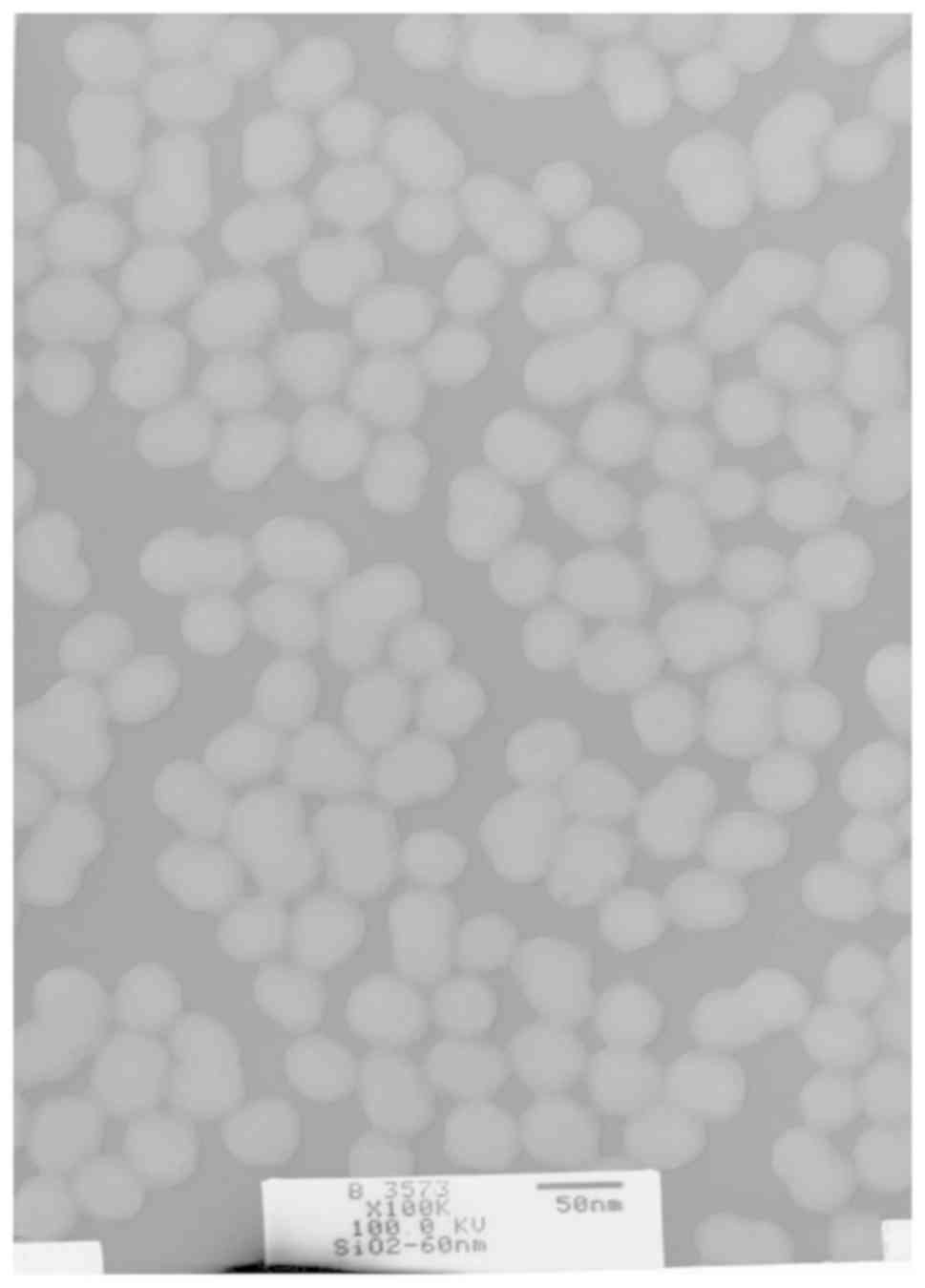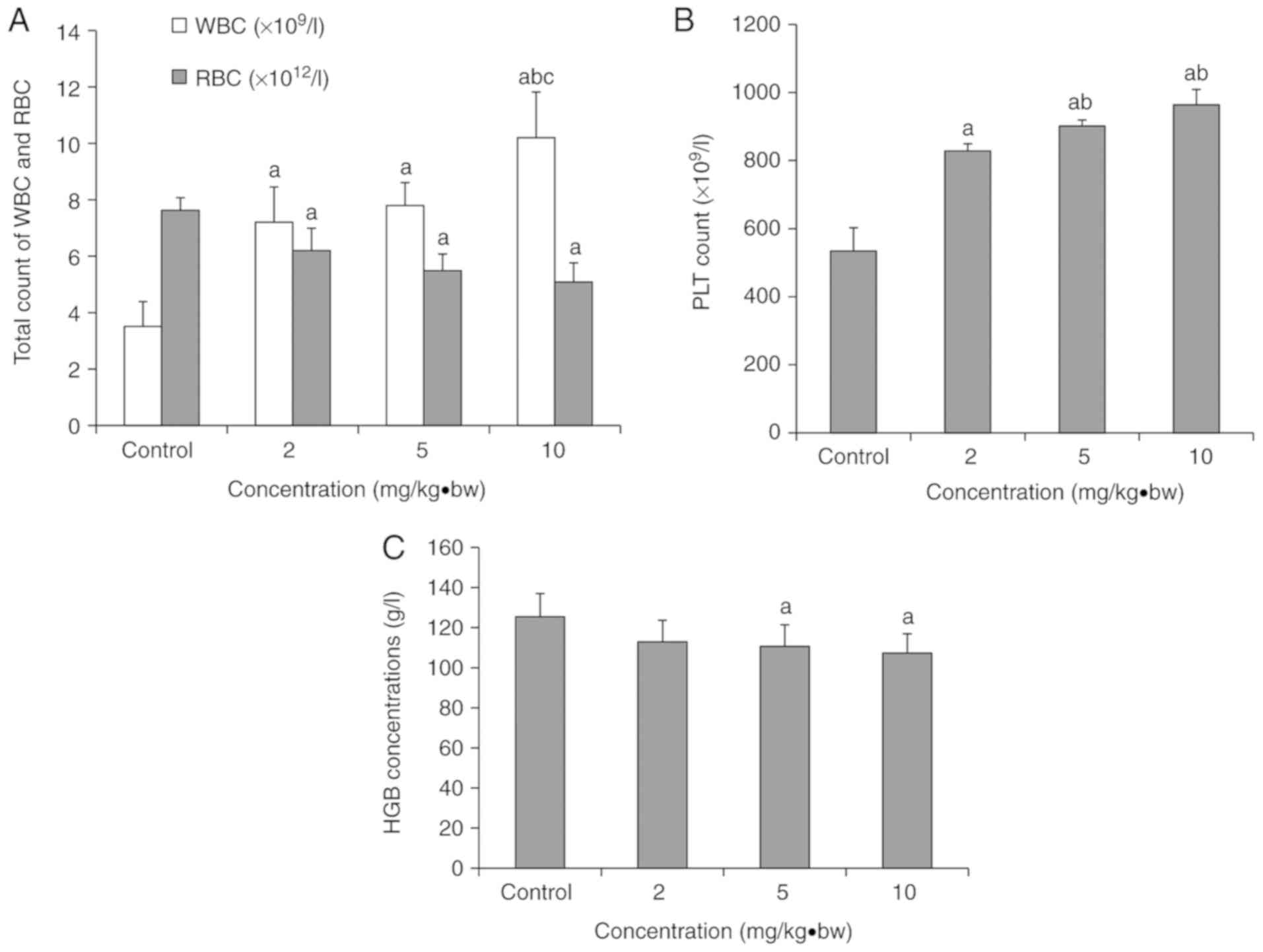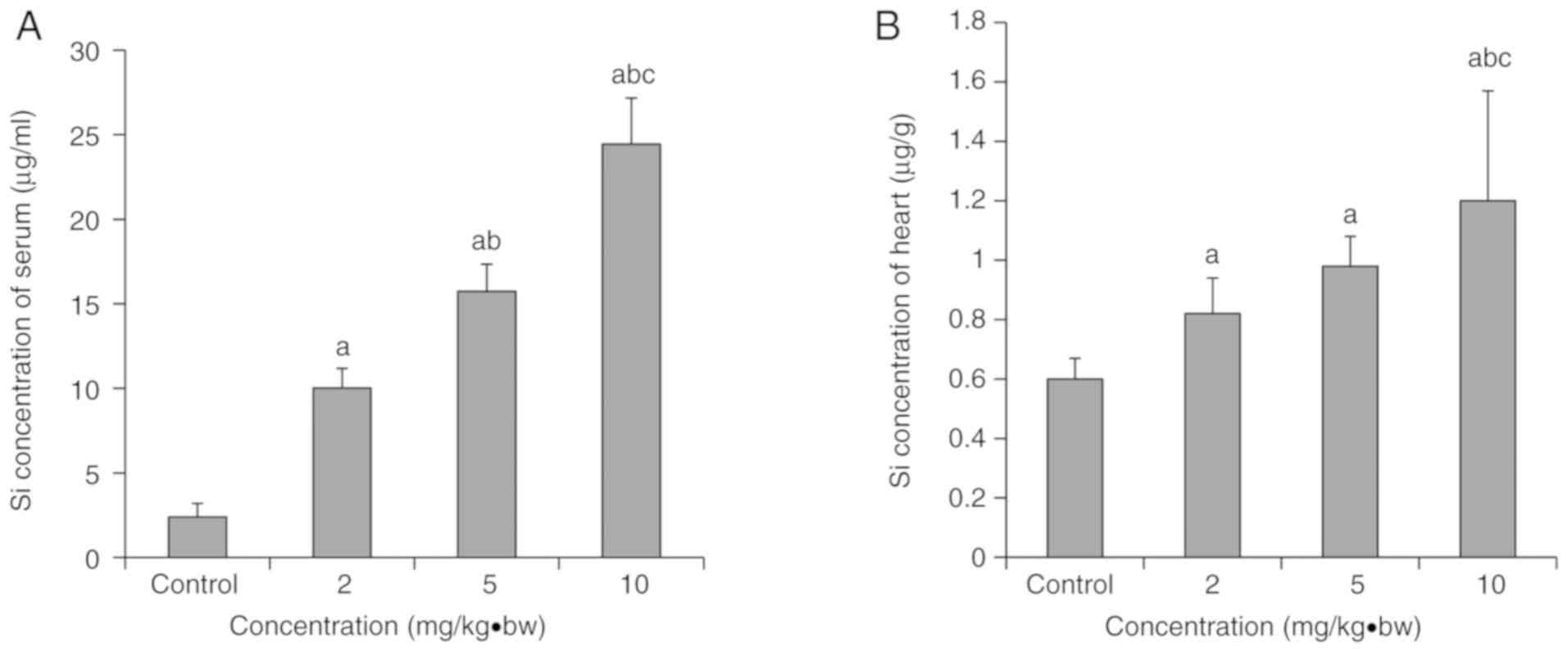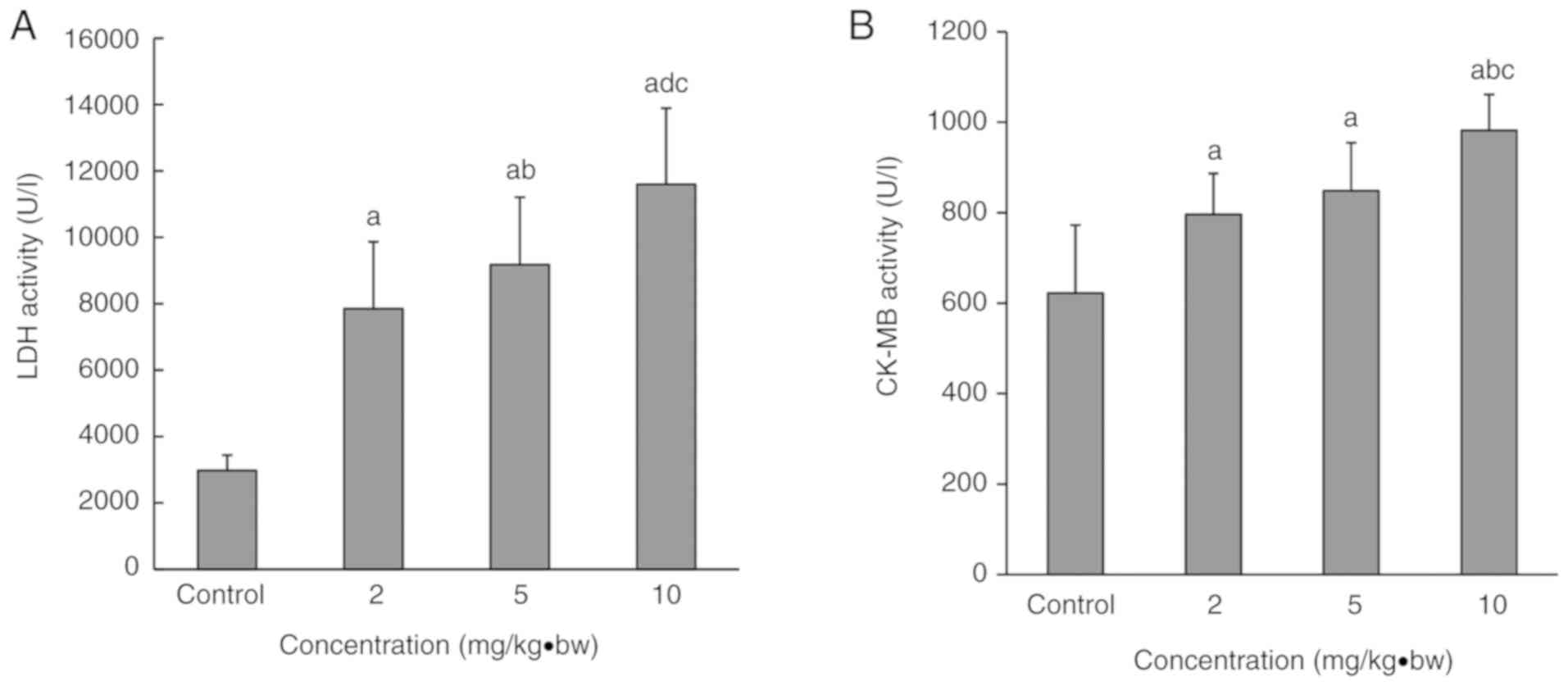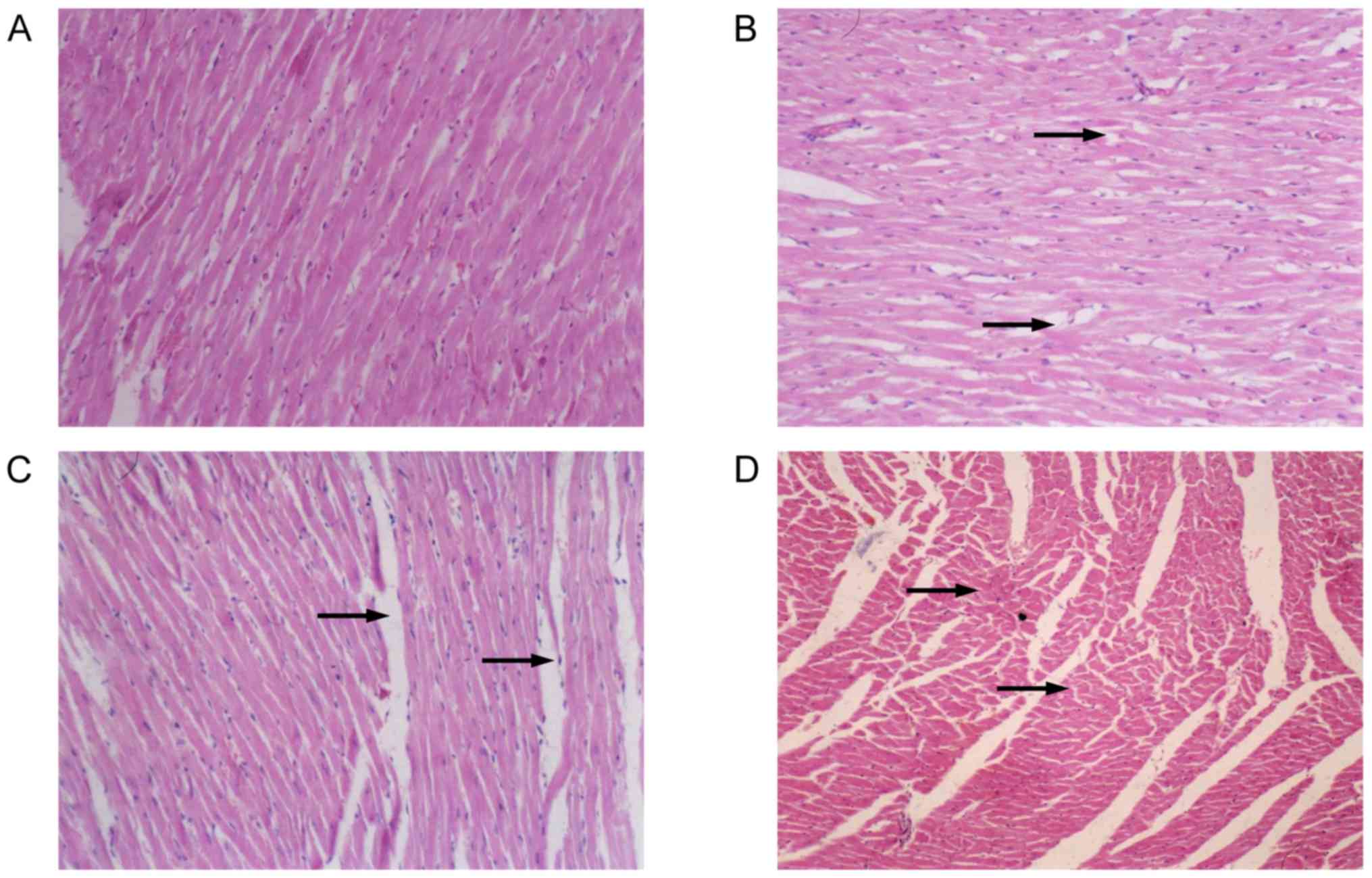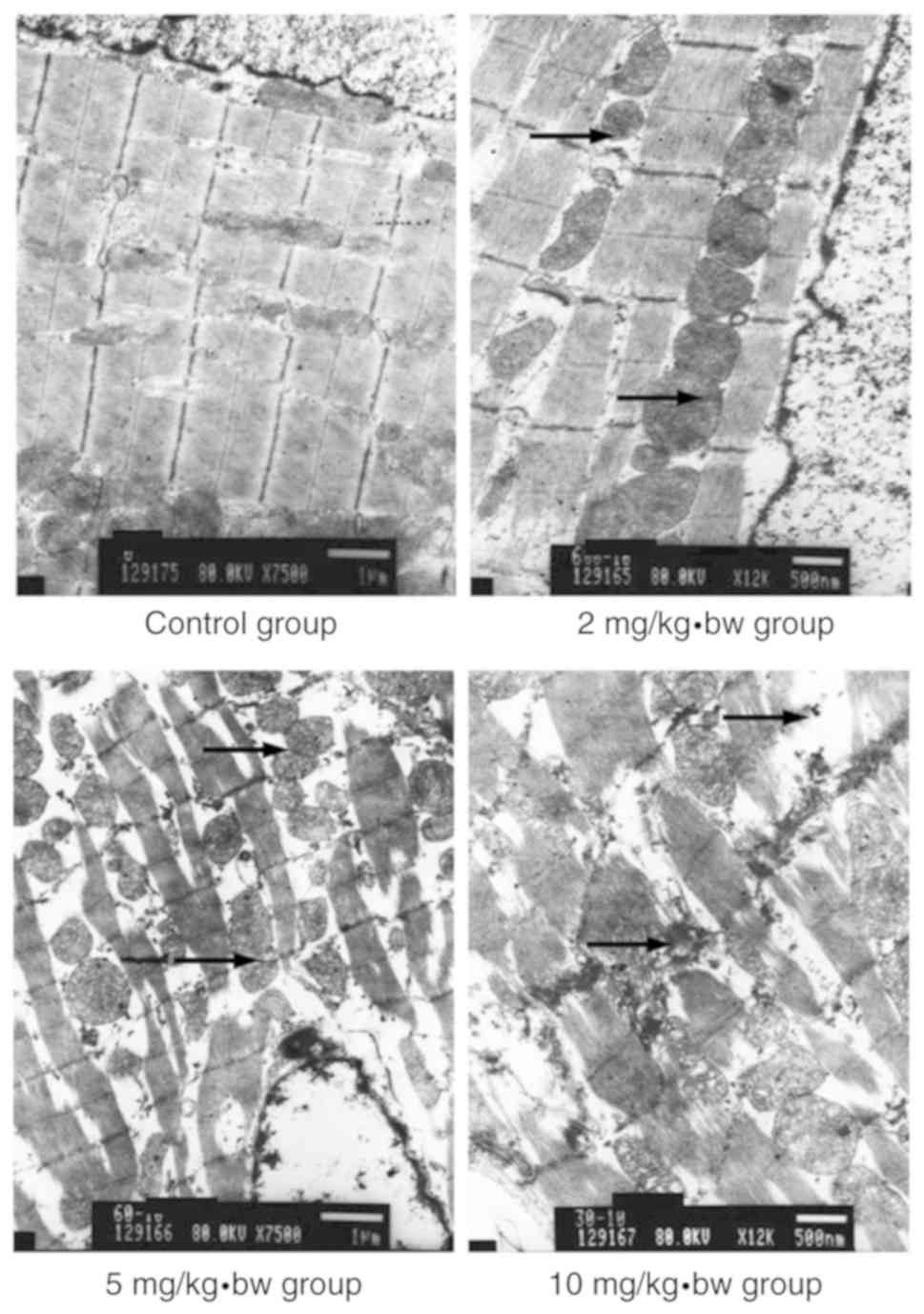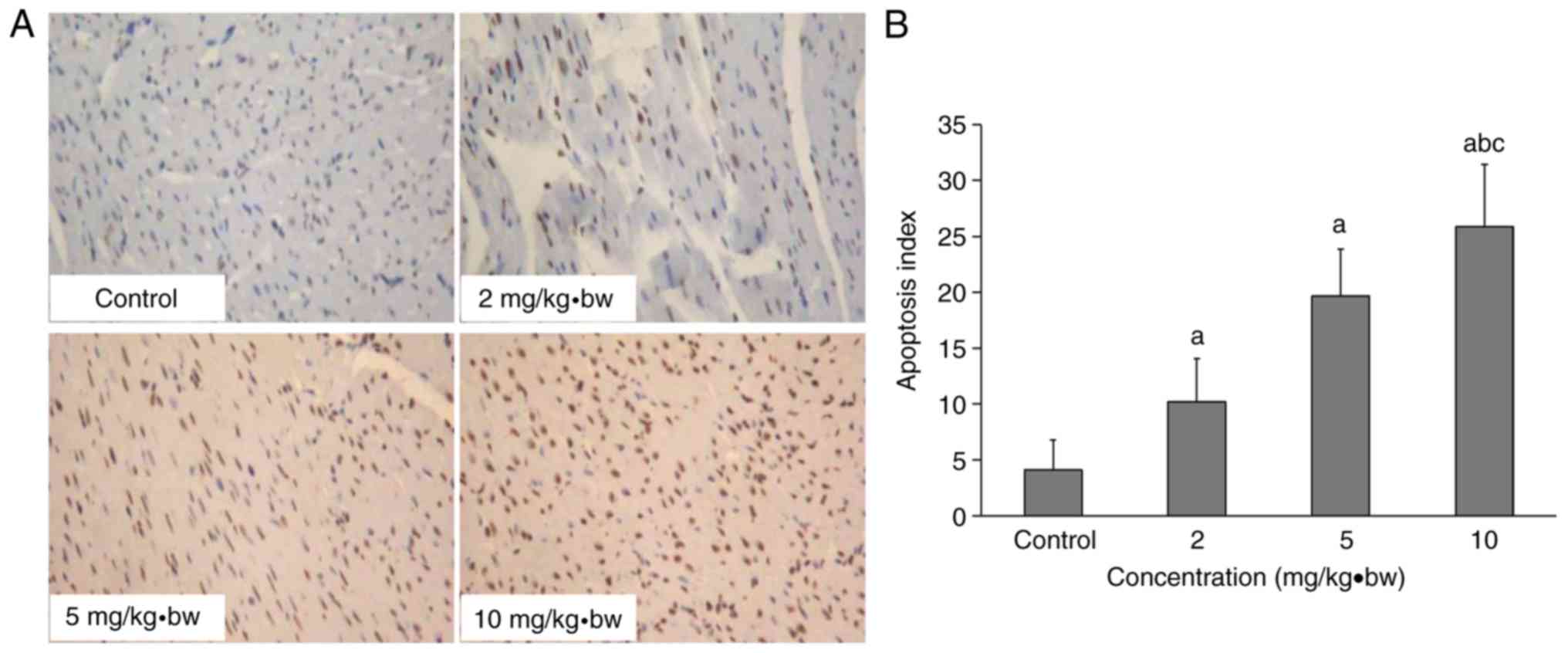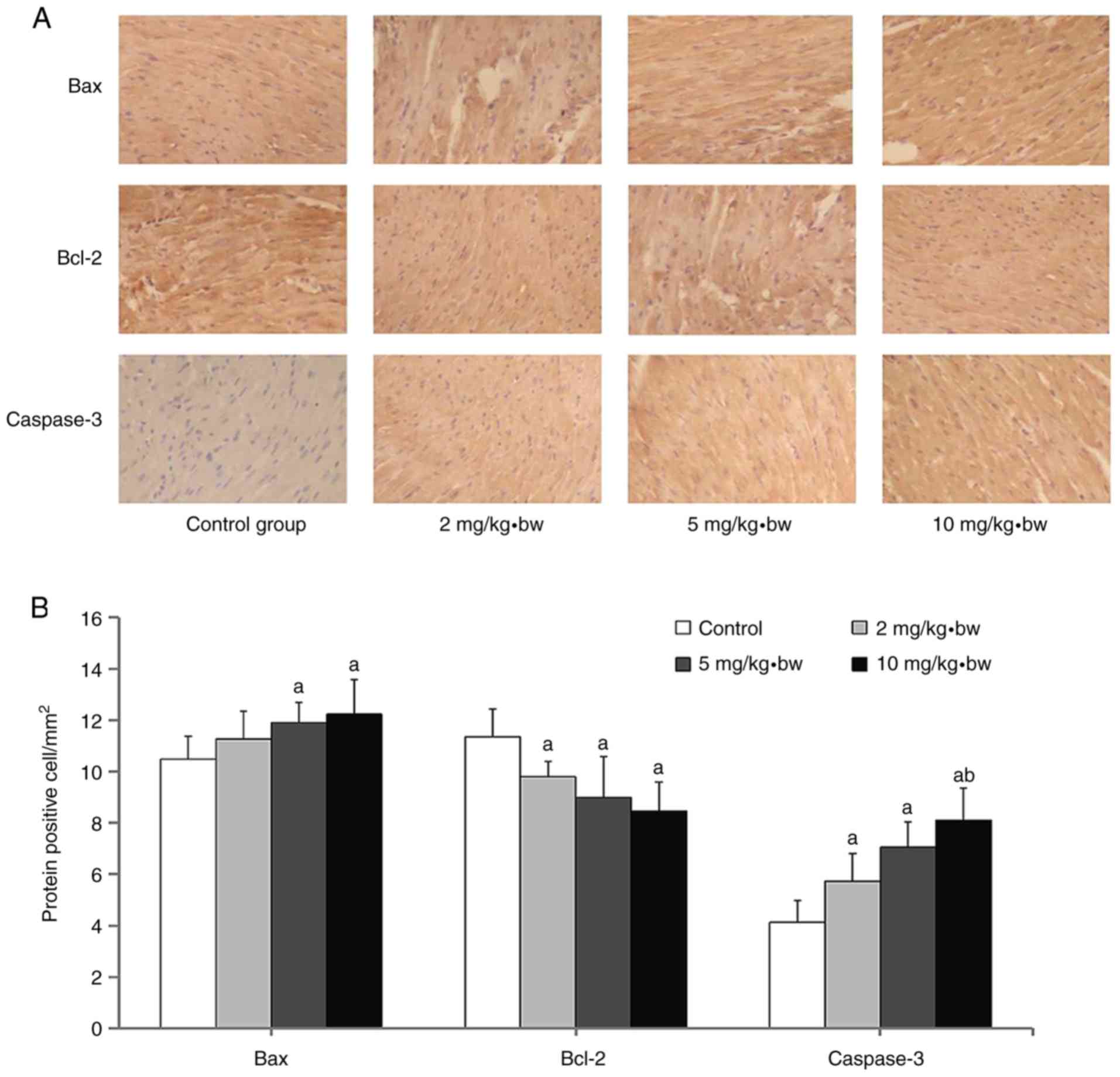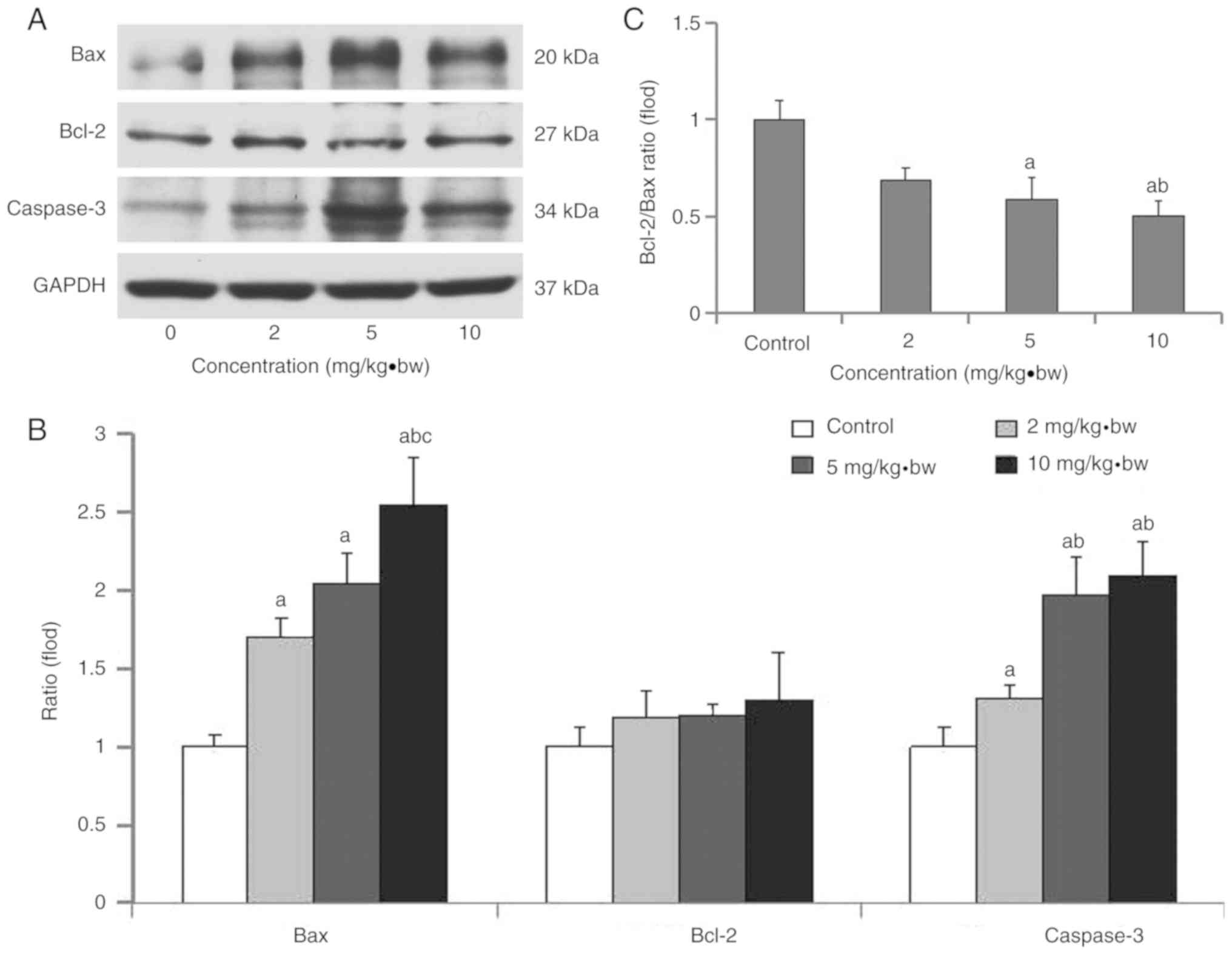|
1
|
Lasfargues M, Stead G, Amjad M, Ding Y and
Wen D: In Situ production of copper oxide nanoparticles in a binary
molten salt for concentrated solar power plant applications.
Materials (Basel). 10. pp. E5372017, View Article : Google Scholar
|
|
2
|
Ortelli S, Costa A and Dondi M: TiO2
nanosols applied directly on textiles using different purification
treatments. Materials (Basel). 8:7988–7996. 2015. View Article : Google Scholar
|
|
3
|
Oliveira MLS, Navarro OG, Crissien TJ,
Tutikian BF, da Boit K, Teixeira EC, Cabello JJ, Agudelo-Castañeda
DM and Silva LFO: Coal emissions adverse human health effects
associated with ultrafine/nano-particles role and resultant
engineering controls. Environ Res. 158:450–455. 2017. View Article : Google Scholar : PubMed/NCBI
|
|
4
|
Shao H, Mohammed MU, Thomas N, Babazadeh
S, Yang S, Shi Q and Shi L: Evaluating excessive burden of
depression on health status and health care utilization among
patients with hypertension in a nationally representative sample
from the medical expenditure panel survey (MEPS 2012). J Nerv Ment
Dis. 205:397–404. 2017. View Article : Google Scholar : PubMed/NCBI
|
|
5
|
Hsin YH, Chen CF, Huang S, Shih TS, Lai PS
and Chueh PJ: The apoptotic effect of nanosilver is mediated by a
ROS- and JNK-dependent mechanism involving the mitochondrial
pathway in NIH3T3 cells. Toxicol Lett. 179:130–139. 2008.
View Article : Google Scholar : PubMed/NCBI
|
|
6
|
Miller M, Raftis JB, Langrish JP, McLean
SG, Samutrtai P, Connell SP, Wilson S, Vesey AT, Fokkens PHB, Boere
AJF, et al: Inhaled nanoparticles accumulate at sites of vascular
disease. Acs Nano. 11:4542–4552. 2017. View Article : Google Scholar : PubMed/NCBI
|
|
7
|
Kong L, Tang M, Zhang T, Wang D, Hu K, Lu
W, Wei C, Liang G and Pu Y: Nickel nanoparticles exposure and
reproductive toxicity in healthy adult rats. Int J Mol Sci.
15:21253–21269. 2014. View Article : Google Scholar : PubMed/NCBI
|
|
8
|
Xia T, Kovochich M and Nel AE: Impairment
of mitochondrial function by particulate matter (PM) and their
toxic components: Implications for PM-induced cardiovascular and
lung disease. Front Biosci. 12:1238–1246. 2007. View Article : Google Scholar
|
|
9
|
Miao AJ, Schwehr KA, Xu C, Zhang SJ, Luo
Z, Quigg A and Santschi PH: The algal toxicity of silver engineered
nanoparticles and detoxification by exopolymeric substances.
Environ Pollut. 157:3034–3041. 2009. View Article : Google Scholar : PubMed/NCBI
|
|
10
|
Geiser M, Rothen-Rutishauser B, Kapp N,
Schürch S, Kreyling W, Schulz H, Semmler M, Im Hof V, Heyder J and
Gehr P: Ultrafine particles cross cellular membranes by
nonphagocytic mechanisms in lungs and in cultured cells. Environ
Health Perspect. 113:1555–1560. 2005. View
Article : Google Scholar : PubMed/NCBI
|
|
11
|
Renwick LC, Donaldson K and Clouter A:
Impairment of alveolar macrophage phagocytosis by ultrafine
particles. Toxicol Appl Pharmacol. 172:119–127. 2001. View Article : Google Scholar : PubMed/NCBI
|
|
12
|
Lanone S and Boczkowski J: Biomedical
applications and potential health risks of nanomaterials: Molecular
mechanisms. Curr Mol Med. 6:651–663. 2006. View Article : Google Scholar : PubMed/NCBI
|
|
13
|
Nan A, Bai X, Son SJ, Lee SB and
Ghandehari H: Cellular uptake and cytotoxicity of silica nanotubes.
Nano Lett. 8:2150–2154. 2008. View Article : Google Scholar : PubMed/NCBI
|
|
14
|
Jia G, Wang H, Yan L, Wang X, Pei R, Yan
T, Zhao Y and Guo X: Cytotoxicity of carbon nanomaterials:
Single-wall nanotube, multi-wall nanotube, and fullerene. Environ
Sci Technol. 39:1378–1383. 2005. View Article : Google Scholar : PubMed/NCBI
|
|
15
|
Nagano T, Nagano K, Nabeshi H, Yoshida T,
Kamada H, Tsunoda SI, Gao JQ, Higashisaka K, Yoshioka Y and
Tsutsumi Y: Modifying the surface of silica nanoparticles with
amino or carboxyl groups decreases their cytotoxicity to
parenchymal hepatocytes. Biol Pharm Bull. 40:726–728. 2017.
View Article : Google Scholar : PubMed/NCBI
|
|
16
|
Duan J, Yu Y, Li Y, Liu H, Jing L, Yang M,
Wang J, Li C and Sun Z: Low-dose exposure of silica nanoparticles
induces cardiac dysfunction via neutrophil-mediated inflammation
and cardiac contraction in zebrafish embryos. Nanotoxicology.
10:575–585. 2016. View Article : Google Scholar
|
|
17
|
Duan J, Hu H, Li Q, Jiang L, Zou Y, Wang Y
and Sun Z: Combined toxicity of silica nanoparticles and
methylmercury on cardiovascular system in zebrafish (Danio rerio)
embryos. Environ Toxicol Pharmacol. 44:120–127. 2016. View Article : Google Scholar : PubMed/NCBI
|
|
18
|
Guerrero-Beltrán CE, Bernal-Ramírez J,
Lozano O, Oropeza-Almazán Y, Castillo EC, Garza JR, García N, Vela
J, García-García A, Ortega E, et al: Silica nanoparticles induce
cardiotoxicity interfering with energetic status and Ca2+ handling
in adult rat cardiomyocytes. Am J Physiol Heart Circ Physiol.
312:H645–H661. 2017. View Article : Google Scholar :
|
|
19
|
Duan J, Yu Y, Li Y, Huang P, Zhou X, Peng
S and Sun Z: Silica nanoparticles enhance autophagic activity,
disturb endothelial cell homeostasis and impair angiogenesis. Part
Fibre Toxicol. 11:502014. View Article : Google Scholar : PubMed/NCBI
|
|
20
|
Kreyling WG, Semmler-Behnke M, Takenaka S
and Moller W: Differences in the biokinetics of inhaled nano-versus
micrometer-sized particles. Acc Chem Res. 46:714–722. 2013.
View Article : Google Scholar
|
|
21
|
Terzano C, Di Stefano F, Conti V, Graziani
E and Petroianni A: Air pollution ultrafine particles: Toxicity
beyond the lung. Eur Rev Med Pharmacol Sci. 14:809–821. 2010.
|
|
22
|
Geiser M: Update on macrophage clearance
of inhaled micro- and nanoparticles. J Aerosol Med Pulm Drug Deliv.
23:207–217. 2010. View Article : Google Scholar : PubMed/NCBI
|
|
23
|
Semmler-Behnke M, Takenaka S, Fertsch S,
Wenk A, Seitz J, Mayer P, Oberdörster G and Kreyling WG: Efficient
elimination of inhaled nanoparticles from the alveolar region:
Evidence for interstitial uptake and subsequent reentrainment onto
airways epithelium. Environ Health Perspect. 115:728–733. 2007.
View Article : Google Scholar : PubMed/NCBI
|
|
24
|
Zanobetti A and Schwartz J: The effect of
particulate air pollution on emergency admissions for myocardial
infarction: A multicity case-crossover analysis. Environ Health
Perspect. 113:978–982. 2005. View Article : Google Scholar : PubMed/NCBI
|
|
25
|
Sullivan J, Sheppard L, Schreuder A,
Ishikawa N, Siscovick D and Kaufman J: Relation between short-term
fine-particulate matter exposure and onset of myocardial
infarction. Epidemiology. 16:41–48. 2005. View Article : Google Scholar
|
|
26
|
Karacalioglu O, Arslan Z, Kilic S, Öztürk
E and Ozguven M: Baseline serum levels of cardiac biomarkers in
patients with stable coronary artery disease. Biomarkers.
12:533–540. 2007. View Article : Google Scholar : PubMed/NCBI
|
|
27
|
Salakou S, Kardamakis D, Tsamandas AC,
Zolota V, Apostolakis E, Tzelepi V, Papathanasopoulos P, Bonikos
DS, Papapetropoulos T, Petsas T and Dougenis D: Increased Bax/Bcl-2
ratio up-regulates caspase-3 and increases apoptosis in the thymus
of patients with myasthenia gravis. In Vivo. 21:123–132.
2007.PubMed/NCBI
|
|
28
|
Jiang W, Chen Y, Li B and Gao S:
DBA-induced caspase-3-dependent apoptosis occurs through
mitochondrial translocation of cyt-c in the rat hippocampus. Mol
Biosyst. 13:1863–1873. 2017. View Article : Google Scholar : PubMed/NCBI
|
|
29
|
Zhang Y, Yu W, Jiang X, Lv K, Sun S and
Zhang F: Analysis of the cytotoxicity of differentially sized
titanium dioxide nanoparticles in murine MC3T3-E1 preosteoblasts. J
Mater Sci Mater Med. 22:1933–1945. 2011. View Article : Google Scholar : PubMed/NCBI
|
|
30
|
Kaiser JP, Wick P, Manser P, Spohn P and
Bruinink A: Single walled carbon nanotubes (SWCNT) affect cell
physiology and cell architecture. J Mater Sci Mater Med.
19:1523–1537. 2008. View Article : Google Scholar
|
|
31
|
Xu Z, Zhang YL, Song C, Wu LL and Gao HW:
Interactions of hydroxyapatite with proteins and its toxicological
effect to zebrafish embryos development. PLoS One. 7:e328182012.
View Article : Google Scholar : PubMed/NCBI
|
|
32
|
Delfino RJ, Sioutas C and Malik S:
Potential role of ultrafine particles in associations between
airborne particle mass and cardiovascular health. Environ Health
Perspect. 113:934–946. 2005. View Article : Google Scholar : PubMed/NCBI
|
|
33
|
Du Z, Zhao D, Jing L, Cui G, Jin M, Li Y,
Liu X, Liu Y, Du H, Guo C, et al: Cardiovascular toxicity of
different sizes amorphous silica nanoparticles in rats after
intratracheal instillation. Cardiovasc Toxicol. 13:194–207. 2013.
View Article : Google Scholar : PubMed/NCBI
|
|
34
|
Bai R, Zhang L, Liu Y, Meng L, Wang L, Wu
Y, Li W, Ge C, Le Guyader L and Chen C: Pulmonary responses to
printer toner particles in mice after intratracheal instillation.
Toxicol Lett. 199:288–300. 2010. View Article : Google Scholar : PubMed/NCBI
|
|
35
|
Sweet MJ, Chessher A and Singleton I:
Chapter five-review: Metal-based nanoparticles; size, function, and
areas for advancement in applied microbiology. Adv Appl Microbiol.
80:113–142. 2012. View Article : Google Scholar
|
|
36
|
Böhme U and Scheler U: Hydrodynamic size
and charge of polyelectrolyte complexes. J Phys Chem B.
111:8348–8350. 2007. View Article : Google Scholar : PubMed/NCBI
|
|
37
|
Oberdörster G, Oberdörster E and
Oberdörster J: Nanotoxicology: An emerging discipline evolving from
studies of ultrafine particles. Environ Health Perspect.
113:823–839. 2005. View Article : Google Scholar : PubMed/NCBI
|
|
38
|
Chen Z, Meng H, Xing G, Yuan H, Zhao F,
Liu R, Chang X, Gao X, Wang T, Jia G, et al: Age-related
differences in pulmonary and cardiovascular responses to SiO2
nanoparticle inhalation: Nanotoxicity has susceptible population.
Environ Sci Technol. 42:8985–8992. 2008. View Article : Google Scholar
|
|
39
|
Mor r is AS, Ad a mca kova-Dodd A, L eh ma
n SE, Wongrakpanich A, Thorne PS, Larsen SC and Salem AK: Amine
modification of nonporous silica nanoparticles reduces inflammatory
response following intratracheal instillation in murine lungs.
Toxicol Lett. 241:207–215. 2016. View Article : Google Scholar
|
|
40
|
Kim JH, Kim CS, Ignacio RM, Kim DH, Sajo
ME, Maeng EH, Qi XF, Park SE, Kim YR, Kim MK, et al: Immunotoxicity
of silicon dioxide nanoparticles with different sizes and
electrostatic charge. Int J Nanomedicine. 9(Suppl 2): 183–193.
2014. View Article : Google Scholar
|
|
41
|
Aravamudan B, Thompson M, Sieck GC,
Vassallo R, Pabelick CM and Prakash YS: Functional effects of
cigarette smoke-induced changes in airway smooth muscle
mitochondrial morphology. J Cell Physiol. 232:1053–1068. 2016.
View Article : Google Scholar : PubMed/NCBI
|
|
42
|
Li J, Lee B and Lee AS: Endoplasmic
reticulum stress-induced apoptosis: Multiple pathways and
activation of p53-up-regulated modulator of apoptosis (PUMA) and
NOXA by p53. J Biol Chem. 281:7260–7270. 2006. View Article : Google Scholar : PubMed/NCBI
|
|
43
|
Satoh M, Matter CM, Ogita H, Takeshita K,
Wang CY, Dorn GW II and Liao JK: Inhibition of apoptosis-regulated
signaling kinase-1 and prevention of congestive heart failure by
estrogen. Circulation. 115:3197–3204. 2007. View Article : Google Scholar : PubMed/NCBI
|
|
44
|
Murphy AN: Potential mechanisms of
mitochondrial cytochrome-C release during apoptosis. Drug Dev Res.
46:18–25. 1999. View Article : Google Scholar
|
|
45
|
Wang Z, Lin D, Zhang L, Liu W, Tan H and
Ma J: Penehyclidine hydrochloride prevents anoxia/reoxygenation
injury and induces H9c2 cardiomyocyte apoptosis via a mitochondrial
pathway. Eur J Pharmacol. 797:115–123. 2017. View Article : Google Scholar : PubMed/NCBI
|
|
46
|
Del Principe MI, Dal Bo M, Bittolo T,
Buccisano F, Rossi FM, Zucchetto A, Rossi D, Bomben R, Maurillo L,
Cefalo M, et al: Clinical significance of bax/bcl-2 ratio in
chronic lymphocytic leukemia. Haematologica. 101:77–85. 2016.
View Article : Google Scholar :
|
|
47
|
Marks N, Berg MJ, Guidotti A and Saito M:
Activation of caspase-3 and apoptosis in cerebellar granule cells.
J Neurosci Res. 52:334–341. 1998. View Article : Google Scholar : PubMed/NCBI
|
|
48
|
Julien O and Wells JA: Caspases and their
substrates. Cell Death Differ. 24:1380–1389. 2017. View Article : Google Scholar : PubMed/NCBI
|
|
49
|
Shafagh M, Rahmani F and Delirezh N: CuO
nanoparticles induce cytotoxicity and apoptosis in human K562
cancer cell line via mitochondrial pathway, through reactive oxygen
species and P53. Iran J Basic Med Sci. 18:993–1000. 2015.
|
|
50
|
Al-Qubaisi MS, Rasedee A, Flaifel MH,
Ahmad SH, Hussein-Al-Ali S, Hussein MZ, Zainal Z, Alhassan FH,
Taufiq-Yap YH, Eid EE, et al: Induction of apoptosis in cancer
cells by NiZn ferrite nanoparticles through mitochondrial
cytochrome C release. Int J Nanomedicine. 8:4115–4129. 2013.
View Article : Google Scholar : PubMed/NCBI
|
|
51
|
Sharma V, Anderson D and Dhawan A: Zinc
oxide nanoparticles induce oxidative DNA damage and ROS-triggered
mitochondria mediated apoptosis in human liver cells (HepG2).
Apoptosis. 17:852–870. 2012. View Article : Google Scholar : PubMed/NCBI
|
|
52
|
Sun L, Li Y, Liu X, Jin M, Zhang L, Du Z,
Guo C, Huang P and Sun Z: Cytotoxicity and mitochondrial damage
caused by silica nanoparticles. Toxicol In Vitro. 25:1619–1629.
2011. View Article : Google Scholar : PubMed/NCBI
|















